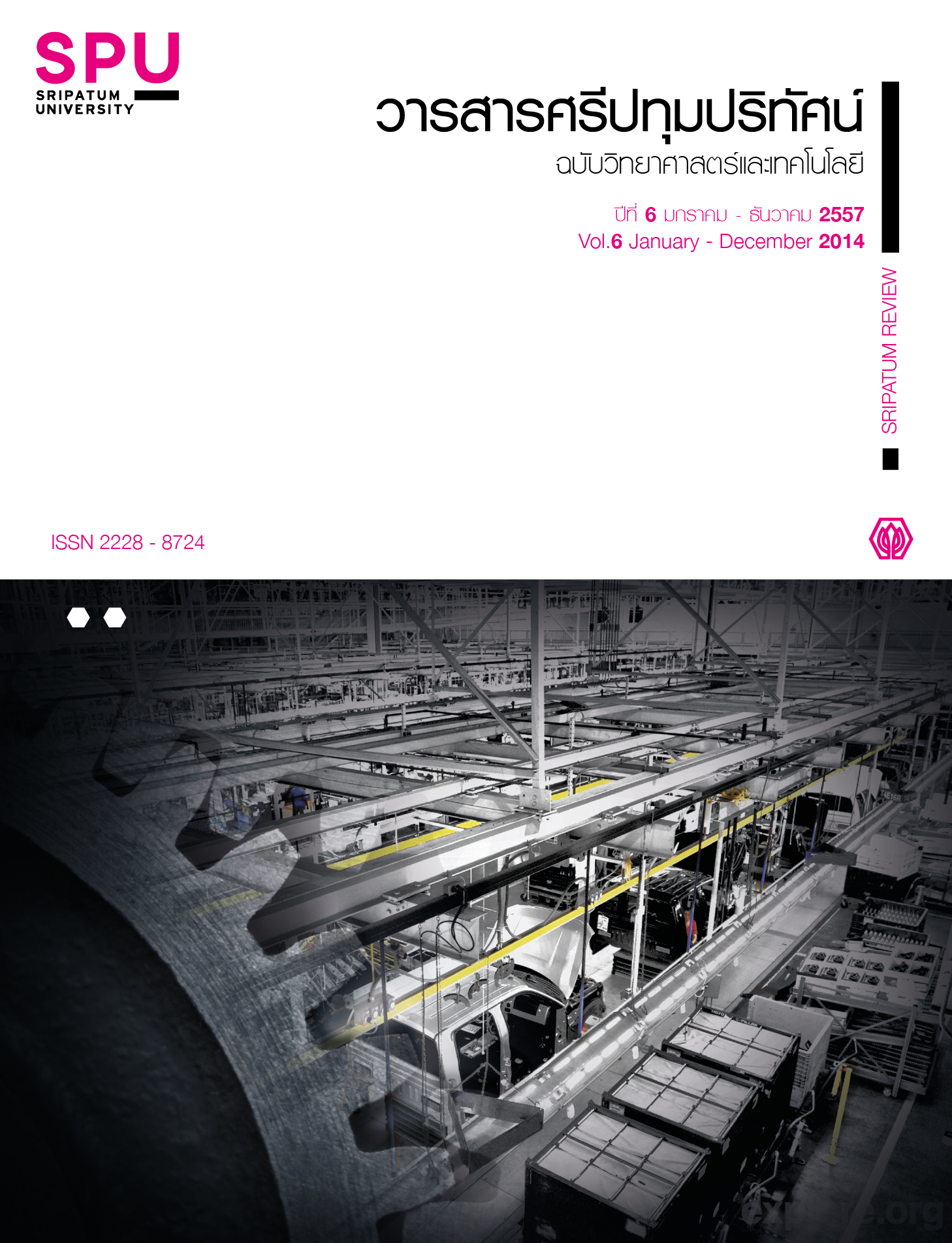FACTOR ANALYSIS FOR OVERLAP DATA SETS USING DYNAMIC FEATURE SELECTION
Main Article Content
Abstract
The purpose of this research was to study the factor analysis on the overlap data sets with the Dynamic Feature Selection (DFS) by Feature Selection and Clustering analysis. The data for this research occurred from the activities in the e-Learning system, by focusing on factors that directly affect student’s achievement.
The result found that the overall efficiency of the Factor Analysis with the Dynamic Feature Selection (DFS) had highest accuracy of 45.17% using three variables. For the Information Gain and the Gain ratio had highest accuracy of 44.80% using seven variables. The result of research can be conclude that the Dynamic Feature Selection (DFS) Algorithm had higher accuracy and less variables than the Information Gain and the Gain ratio.
Article Details
References
Ben N’Cir, C.-E., G. Cleuziou, and N. Essoussi. 2013. “Identification of Non-Disjoint Clusters with Small and Parameterizable Overlaps.” In 2013 International Conference on Computer Applications Technology (ICCAT), 1–6.
Fodor, Imola K. 2002. A Survey of Dimension Reduction Techniques. Technical Report UCRL-ID-148494, Lawrence Livermore National Laboratory.
Han, Jiawei. 2012. Data Mining: Concepts and Techniques. 3rd ed. Burlington, MA: Elsevier.
Koller, Daphne, and Mehran Sahami. 1996. “Toward Optimal Feature Selection.” In , 284–92. Morgan Kaufmann.
Ladha, L., and T. Deepa. 2011. “Feature Selection Methods and Algorithms.” International Journal on Computer Science and Engineering 3 (5): 1787–97.
Liu, Huan, and Lei Yu. 2005. “Toward Integrating Feature Selection Algorithms for Classification and Clustering.” Knowledge and Data Engineering, IEEE Transactions on 17 (4): 491–502.
Lu, Haibing, Yuan Hong, W.N. Street, Fei Wang, and Hanghang Tong. 2012. “Overlapping Clustering with Sparseness Constraints.” In 2012 IEEE 12th International Conference on Data Mining Workshops (ICDMW), 486–94.
Mak, Lee Onn, Gee-Wah Ng, G. Lim, and Kezhi Mao. 2011. “A Merging Fuzzy ART Clustering Algorithm for Overlapping Data.” In 2011 IEEE Symposium on Foundations of Computational Intelligence (FOCI), 1–6.
Sengupta, Nandita, Amit Srivastava, and Jaya Sil. 2013. “Reduction of Data Size in Intrusion Domain Using Modified Simulated Annealing Fuzzy Clustering Algorithm.” In Mobile Communication and Power Engineering, edited by Vinu V. Das and Yogesh Chaba, 97–102. Communications in Computer and Information Science 296. Springer Berlin Heidelberg.
Tsai, C.-F., C.-T. Tsai, C.-S. Hung, and P.-S. Hwang. 2011. “Data Mining Techniques for Identifying Students at Risk of Failing a Computer Proficiency Test Required for Graduation.” Australasian Journal of Educational Technology 27 (3): 481–98.
Ward Jr, Joe H. 1963. “Hierarchical Grouping to Optimize an Objective Function.” Journal of the American Statistical Association 58 (301): 236–44.
Witten, Ian H. 2011. Data Mining: Practical Machine Learning Tools and Techniques. 3rd ed. Morgan Kaufmann Series in Data Management Systems. Burlington, MA: Morgan Kaufmann.
Yuan, Huang, Shian-Shyong Tseng, Wu Gangshan, and Zhang Fuyan. 1999. “A Two-Phase Feature Selection Method Using Both Filter and Wrapper.” In 1999 IEEE International Conference on Systems, Man, and Cybernetics, 1999. IEEE SMC ’99 Conference Proceedings, 2:132–36 vol.2.
Zhao, Ying, George Karypis, and Usama Fayyad. 2005. “Hierarchical Clustering Algorithms for Document Datasets.” Data Mining and Knowledge Discovery 10 (2): 141–68.


